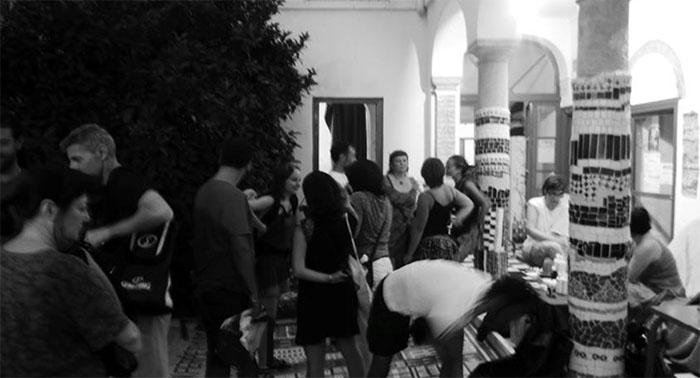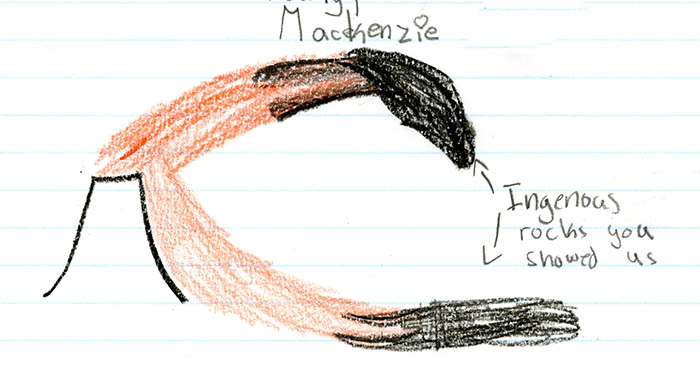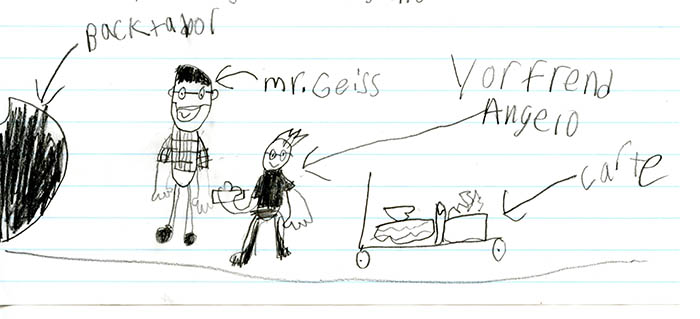
downtown Höfn during rush hour
Things are definitely happening in Höfn. Its claim to fame is that it’s one of the few (only?) good natural harbors on the southern coast of Iceland. It has a town hall, a public pool, a small fleet of fishing boats and a few bars. After an hour of strolling through the town we’ve seen it all and start recognizing the locals.

Höfn harbor
We continue our quest for the best hot dog in Iceland and so far the local Olís station is the clear winner. We have three dogs each and wash it down with some fine 3.5% Tuborg.
The next day at 9AM we meet Sissi our superjeep driver from Fjallastakkur, who takes us to the trail head at Illikambur. It was definitely worth the money! We cross an impressive river, which would have been a major pain to cross on foot. Lauren would have had a blast!

View from Illikambur back towards the coast.

The trail down to the Múlaskáli hut.

Taking advantage of a warden-less hut.
After an hour we arrive at a small parking lot at the edge of a deep gorge. From there it is a short 30-minute walk to the hut at Múlaskáli. We share the hut and campsite with Nigel, a 50-something year old hiker from Hull in England. Since there is no warden or caretaker at the hut we set up our tent between some birch trees. The hut has a beautiful, flag-less flag pole and for the first time our Trinity flag flies high and proud for a photo op before we move it closer to our tent.

No need to start an international incident: the flag goes into a birch tree by our tent.
In the afternoon we go on a short hike up a nearby mountain. The weather is not particularly bad, but the clouds are low and the trails start out steep. With only a light daypack it feels like flying up those mountains.

View across the valley.

Jon finds a new chair for his office.

No, we are not lost, but one member of he expedition is taking a long time to take photographs, leaving plenty of time to ponder the map.
We make it almost to the top, but reach the clouds and snow just below the summit. Since the inside of every cloud looks pretty much the same we turn around and return to our camp site.

Öxarfellsjökull, a small glacier coming off the Vatnajökull ice cap.

Waiting for the photographer – again…

Scree slope at the angle of repose.
At camp we explore the hut, which is very nice, cook dinner, plan tomorrow’s hike and go to bed early.

Making good use of the Múlaskáli hut.
back to the regular trip
still not enough? onward to day 2 of our Ljónsoræfi adventure





































